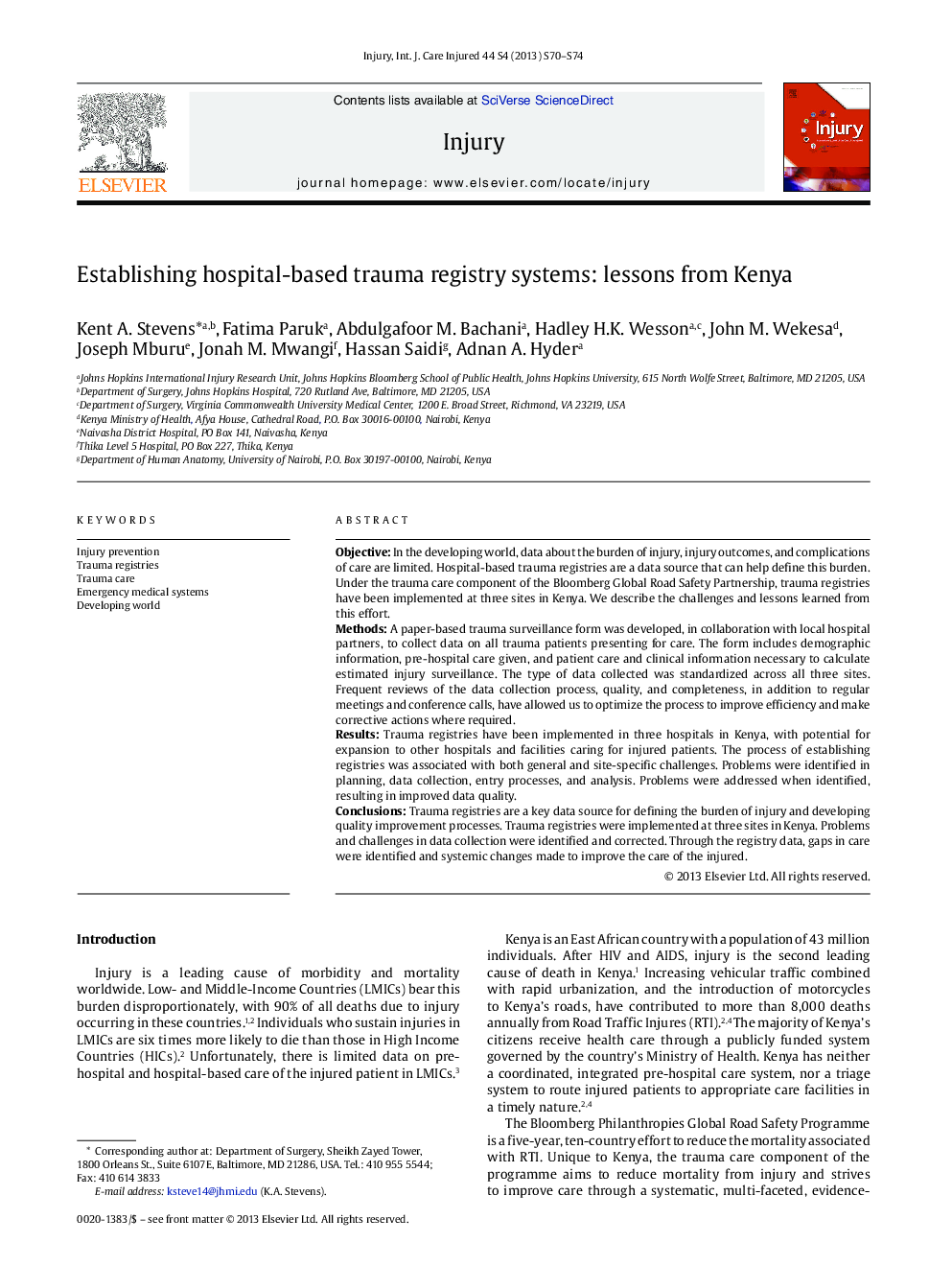| کد مقاله | کد نشریه | سال انتشار | مقاله انگلیسی | نسخه تمام متن |
|---|---|---|---|---|
| 3240129 | 1206032 | 2013 | 5 صفحه PDF | دانلود رایگان |

ObjectiveIn the developing world, data about the burden of injury, injury outcomes, and complications of care are limited. Hospital-based trauma registries are a data source that can help define this burden. Under the trauma care component of the Bloomberg Global Road Safety Partnership, trauma registries have been implemented at three sites in Kenya. We describe the challenges and lessons learned from this effort.MethodsA paper-based trauma surveillance form was developed, in collaboration with local hospital partners, to collect data on all trauma patients presenting for care. The form includes demographic information, pre-hospital care given, and patient care and clinical information necessary to calculate estimated injury surveillance. The type of data collected was standardized across all three sites. Frequent reviews of the data collection process, quality, and completeness, in addition to regular meetings and conference calls, have allowed us to optimize the process to improve efficiency and make corrective actions where required.ResultsTrauma registries have been implemented in three hospitals in Kenya, with potential for expansion to other hospitals and facilities caring for injured patients. The process of establishing registries was associated with both general and site-specific challenges. Problems were identified in planning, data collection, entry processes, and analysis. Problems were addressed when identified, resulting in improved data quality.ConclusionsTrauma registries are a key data source for defining the burden of injury and developing quality improvement processes. Trauma registries were implemented at three sites in Kenya. Problems and challenges in data collection were identified and corrected. Through the registry data, gaps in care were identified and systemic changes made to improve the care of the injured.
Journal: Injury - Volume 44, Supplement 4, December 2013, Pages S70–S74